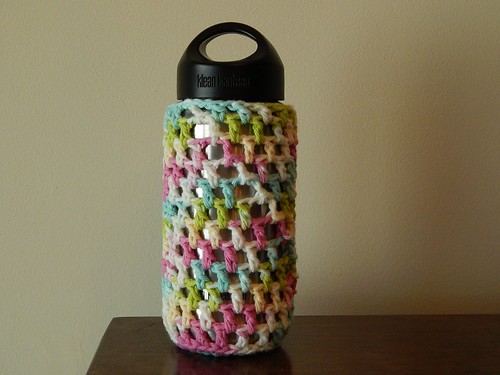
A minor annoyance amidst all the to-ing and fro-ing has been the persistent clanking noises emanating from my tote bag, caused by divers things striking my fancy stainless steel water bottle. To reduce the noise and to prevent damage to its finish, I went over to the dark side and crocheted a water bottle cozy from some Lily Sugar 'n Cream acquired on the fly at a big box store. (The colorway is Lava Lamp. Really?) There's no pattern, just granny-ing along. It works pretty well. Ah, blessèd freedom from clanking!
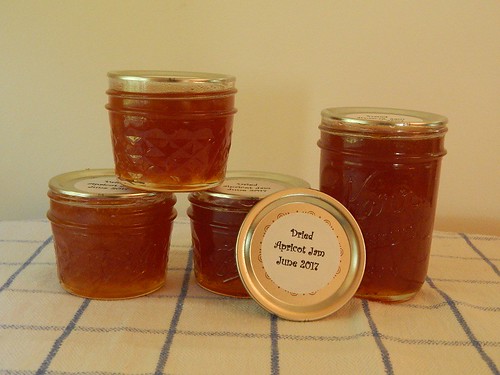
The FIJ June challenge, jam, posed a vexing challenge at the beginning of the month: there's not a lot of fresh local fruit roundabout Exit 151. Thus the appeal of this unexpected recipe for Dried Apricot Jam. Although perhaps by now gentle readers know better than to be surprised that intrepid canners can put up almost anything. And although it's no surprise a plant-rich diet has a great impact on curbing global warming, according to the rankings in Drawdown, eating imported fruits and vegetables has less environmental impact than eating local beef. Put another way, a plant-based diet is so much better for the planet than red meat, transportation considerations become negligible. Also, while eating local seasonal produce is great taste-wise and it supports local farmers, it doesn't do that much environmental good. Huh.
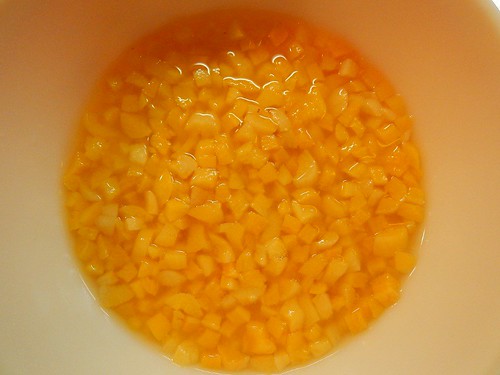
Anyway, the jam technique is simple: dice dried apricots, rehydrate overnight, cook down with sugar and a bit of lemon juice until jammy. (That's a technical term.) My poor digicam could not capture how variable in color and texture the rehydrating bits looked – some bits were almost white, wrinkled, and tough, some bits were deep orange and very soft. In the pot the bits broke down and deepened in hue in a most satisfactory way, and the results were excellent in all ways: delicious, convenient, and a spot-on yield. I put up one half-pint jar to use in jam cake and three quarter-pints for other uses. Happiness.
Time passed, and lovely fresh apricots became available in the markets. So I did the obvious, bought some fresh apricots with the intent of doing a jam-off. Unfortunately more time passed, and about half the apricots went bad before I could do that (oops, food waste). Ahem.
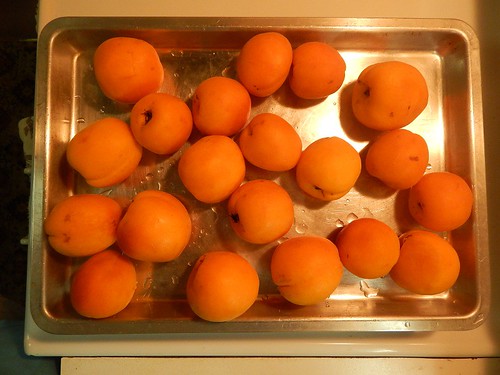
The recipe for Simple Apricot Jam is as minimalist as it gets: two ingredients, chopped fruit and sugar in a 3:1 ratio by weight, let macerate overnight, cook down. That's it. The formula works for other peel-on, high-acid fruit, too. I neglected to take a pic of the chopped fruit, but the bits were deeply colored and firm-textured, with velvet skin. In the pot everything cooked down into a beautiful golden paste that was thin at first, but slowly thickened into jamminess. The odor was heavenly.
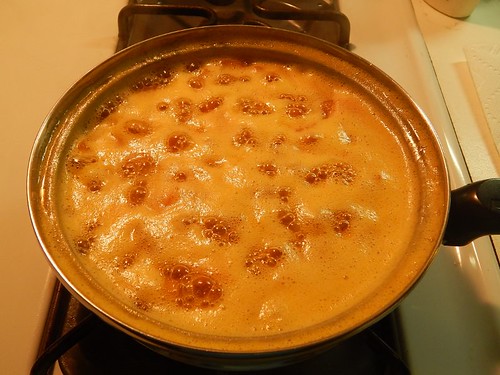
I started with 27 oz. (.765 kg) chopped fruit and 9 oz (.255 kg) sugar, and ended with four quarter-pints and some well-licked implements.
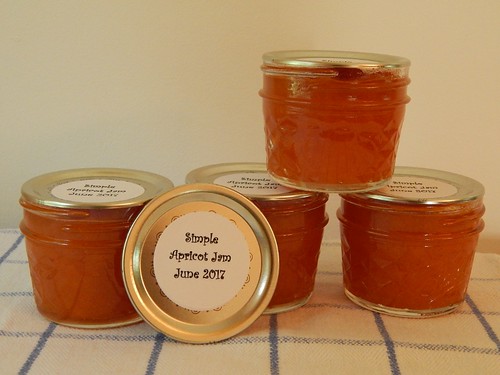
Initially I'd thought of a doing taste-off between apricot jam made from dried fruit and apricot jam made from fresh fruit. Now I know there's no comparison. Dried Apricot Jam is excellent; Simple Apricot Jam is early summer in a jar. I could tell by the smell when it was cooking down that it would be too good for putting in jam cake, so I changed the put-up to all small jars. One may as well call it HC Apricot Jam.
No comments:
Post a Comment